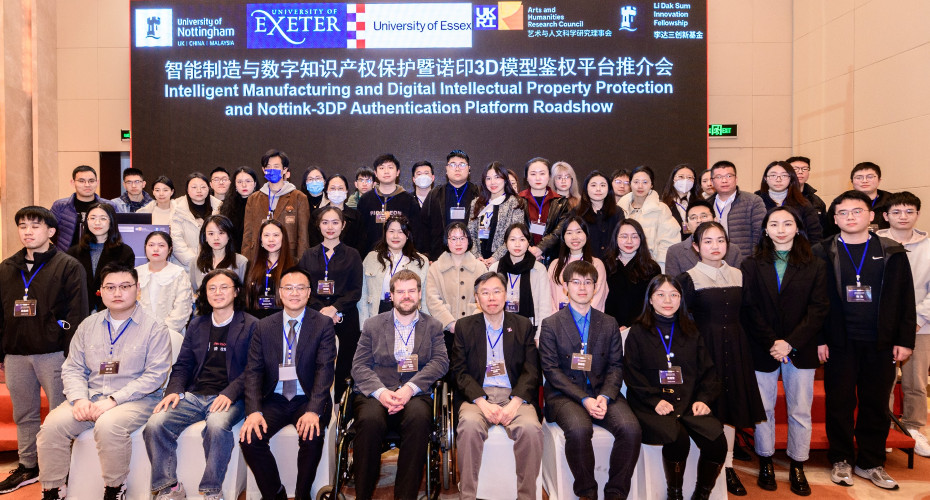Pioneering work helping creators to protect copyright during 3D printing

Dr Griffin and colleagues recently showcased their research to more than 40 companies and 100 academics at two events in Shanghai and Ningbo
Pioneering work by experts is helping to protect inventions as the use of 3D printing grows.
Research led by Dr James Griffin, from the University of Exeter Law School, is helping creators to know who accesses, prints and downloads their designs, allowing them to protect their intellectual property and tackle any copyright infringement.
The researchers have patented watermarking technology for use with 3D printing, and for this watermarking technology to be linked to blockchain, to allow the licensing of 3D printed objects.
They have now launched a new website which acts as a platform to record this licensing. This will revolutionise how 3D printed objects can be distributed, traced and searched for. This will enable new forms of distribution and open up new possibilities for licensing around the world.
Dr Griffin and colleagues recently showcased their research to more than 40 companies and 100 academics at two events in Shanghai and Ningbo. The firms are all interested in using the website, now available in China – one of the world’s biggest 3D printing markets.
Dr Griffin said: “This research will help companies and individuals protect their work and revenue stream. Most countries around the world have the same law around watermarks so there’s the potential for this platform to be used globally.
“A licensing and certification process helps show copyright infringements and guarantee the authenticity of work. It is an essential tool to help people protect their invention as technology progresses.”
The research, funded by the AHRC and Li Dak Sum Fellowship, allows for blockchain technology to be applied within items produced by 3D printers. The watermark appears on the 3D printed object and any images of the 3d printed object.
The use of 3D printing is rapidly growing in a range of industries – including aeronautics, car manufacturing and dentistry – but innovation has become constrained because of the lack of clarity over legal rules.
Many people using 3D printing recruit a company to print using a file which they download. Licensing and watermarking this download will lead to intellectual property being able to be authenticated, traded and stored. Incorporating blockchain into this process will allow copyright information to be included and give creators an extra layer of legal protection as well as the watermark.



